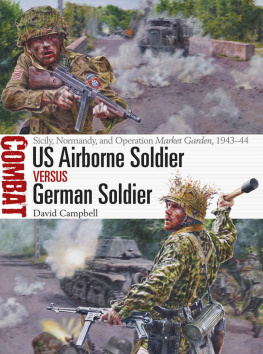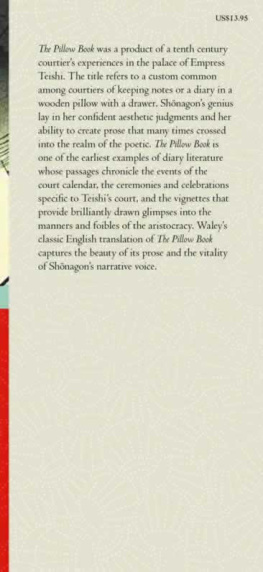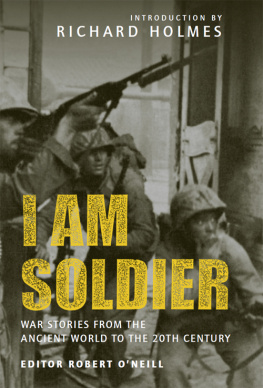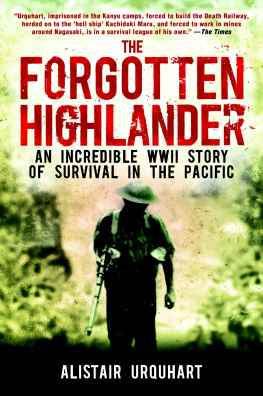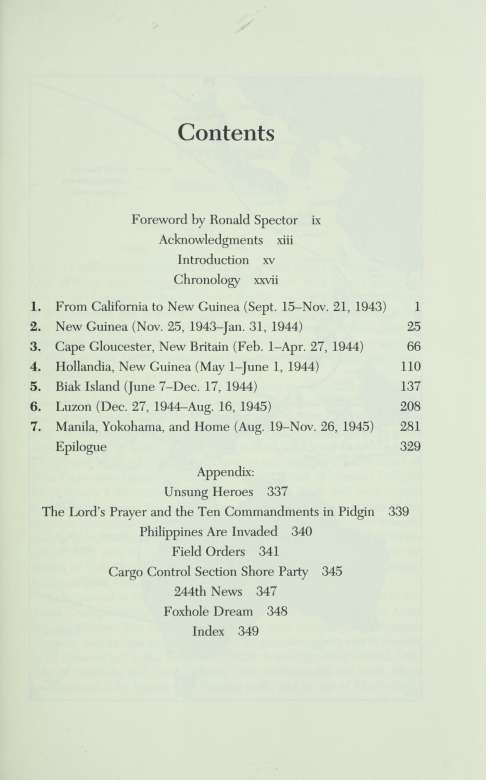This book made available by the Internet Archive.
To Janet
For faith unshakable, for labor unflagging, and for love immeasurable
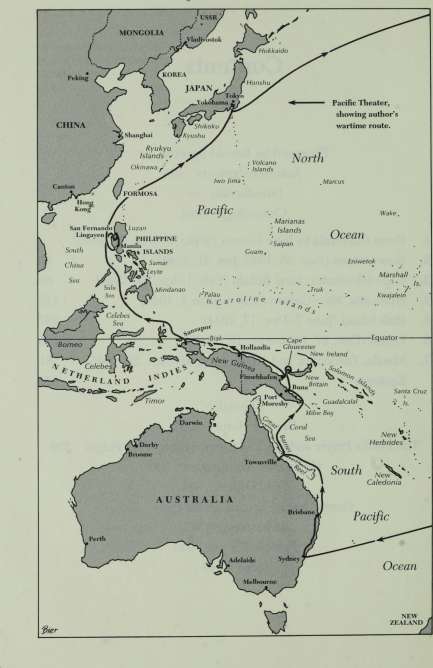
Foreword
Ronald Spector
Over 16 million Americans served in the armed forces in World War II. One of them was Corporal Sy M. Kahn of New York City. During his two years of service in the Southwest Pacific theater, Kahn kept a diary. It is a valuable and possibly unique contribution to the records of the war against Japan. In the five decades since the end of World War II, veterans have published collections of their letters and written a number of fine memoirs, yet few other complete contemporary diaries have been published.
Of all the theaters of war in which Americans served during World War II, the Southwest Pacific is probably among the least publicized and least remembered. To most Americans, even those with a little knowledge of history, names such as Midway, Tarawa, and Iwo Jima spark vague feelings of familiarity but few indeed have ever heard of Cape Gloucester, Biak, or Hollandia. These points along the north coast of New Guinea and its nearby islands were the scene of General Douglas MacArthur's 2,000-mile advance from Australia north and west toward the Philippines and Japan"our jungle road to Tokyo," as one of his generals later phrased it. Even today this area is among the most remote, inaccessible, and unhealthy in the world. While thousands of veterans return each year to Normandy, the Ardennes, and Italy to revisit the scenes of their World War II service, far fewer have managed to return to Papua New Guinea or Irian Jaya.
Kahn served in the 244th Port Company, 495th Port Battalion of the Army Transportation Corps, part of what were then called the Army Service Forces. The primary mission of a port company, as the name suggests, was to load and unload ships. Logistical support was important in all theaters but in the Southwest Pacific it was especially critical. Outside of Australia and New Zealand, port facilities did not exist. Ships were unloaded by lighter or in landing craft, and as one of MacArthur's
X
Foreword
logistics officers recalled, it "seemed to take a year to get the stuff from the ship to the shore."
Not only was there a shortage of port facilities but throughout the war in the Pacific there was also a shortage of port troops like Kahn's battalion. American generals were reluctant to use their limited shipping space to transport service troops across the Pacific in place of combat troops. Kahn and his fellow soldiers in the 244th may not have been as glamorous as the Marines or the fighter pilots, but they were a far scarcer resource. As a consequence they were worked incessantly throughout the war.
The experience of the 244th, which received no periods of stand-down and practically no furloughs 'for the entire period it was deployed, is not unrepresentative of other Army service troops in the Southwest Pacific. The African-American 810th Engineer Aviation Battalion, for example, arrived irr the Southwest Pacific early in 1942, served in Guadalcanal, Espiritu Santo, Biak, and the Philippines, and finally returned home four months after V-J Day.
Kahn and his company arrived in New Guinea at a time when the entire pace of the Pacific war was gathering momentum. Marines and soldiers had just landed on Tarawa and Makin in the Gilbert Islands, inaugurating the Allied drive across the central Pacific. Mac Arthur's forces in New Guinea and Admiral William F. Halsey's forces in the Solomons were completing their encirclement of Rabaul, the major Japanese base in the South Pacific, located on the island of New Britain. The 244th Port Company's first combat assignment was to provide support for the 1st Marine Division on Cape Gloucester at the extreme western tip of New Britain. The seizure of Cape Gloucester with its airfield was among the final moves in the encirclement of Rabaul. (Among the Marines for whom the 244th provided supplies and ammunition was a young battalion commander named Lewis Walt who twenty years later would command the Marine forces in Vietnam.)
While the 244th was at Cape Gloucester, other elements of Mac-Arthur's forces seized the Admiralty Islands in a risk) 7 surprise landing, closing the last fink in the chain around Rabaul. By that time, MacArthur and his staff were alreadv planning an audacious leap of 580 miles to Hollandia in Dutch New Guinea, bypassing some 40,000 Japanese troops along the New Guinea coast. Aided by knowledge of the Japanese codes and ciphers, MacArthur's forces achieved complete surprise at Hollandia and quicklv seized all tiiree nearby airfields. Kahn and the 244th landed at Hollandia on D +12 and remained for about one month before proceeding to their third and most difficult assignment on the small island of Biak in the Shoutens off the northwest coast of New Guinea.
Foreword
yd
The fight for Biak. which the Americans needed as a heaw bomber base to support MacArthur's drive toward the Philippines and Nimitz's operations in die Mariannas and Palaus. developed into one of the toughest campaigns ot the Pacific war. The Japanese held out tor weeks in caves dug into die steep coral cliffs bordering the airfield in which diev carefully emplaced artillerv mortars and automatic weapons. The heat, disease, and lack of water proved almost as bad an enemv as the Japanese.
By the time the 244th left Biak in December 1944. American forces had returned to the Philippines with the invasion of Leyte. In January 1945. Kahn and his fellow GIs made dieir final landins of the war. part of the 175.000-man American invasion force which landed at Lingaven Gulf on Luzon.
'"Whatever it means to be a Chilian from the ages of eighteen to twenty-one was closed to me." Kahn notes in Iris introduction. To Kahn and to die millions ot other Americans who came of age in the earlv 1940s, die war was a defining experience, one thev could never forget but one which thev could never completely explain. Tins diarv is a rare window into that experience, into die world of voung men suddenly transported from die everyday world of jobs, school, and family into a world impossibly strange and remotea world in which youdiful mistakes often resulted in deadi or horrible injuries, a world where die possibilities of escape seemed distant and uncertain. "We were simply enclaves of soldiers in die midst of remote jungles, our energies centered on hard labor and survival." Anv reader wishing to know how diese young men not onlv survived but retained the resourcefulness and determination to emerge successfully from war in a pitiless environment against an implacable enemv will profit from reading dns book.

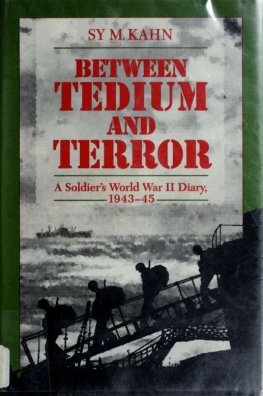
![Dzhon Skalci - Questions for a Soldier [Old Man's War 1.5]](/uploads/posts/book/856937/thumbs/dzhon-skalci-questions-for-a-soldier-old-man-s.jpg)

